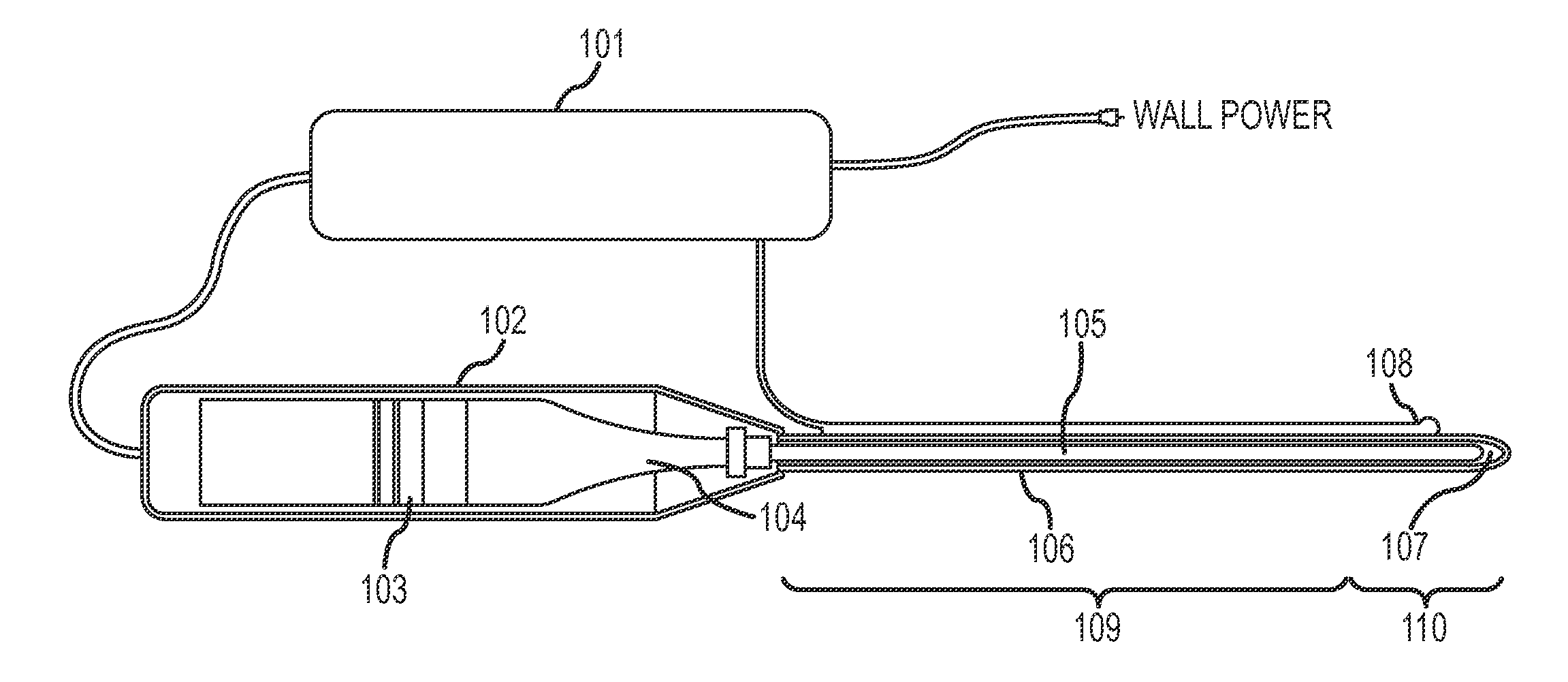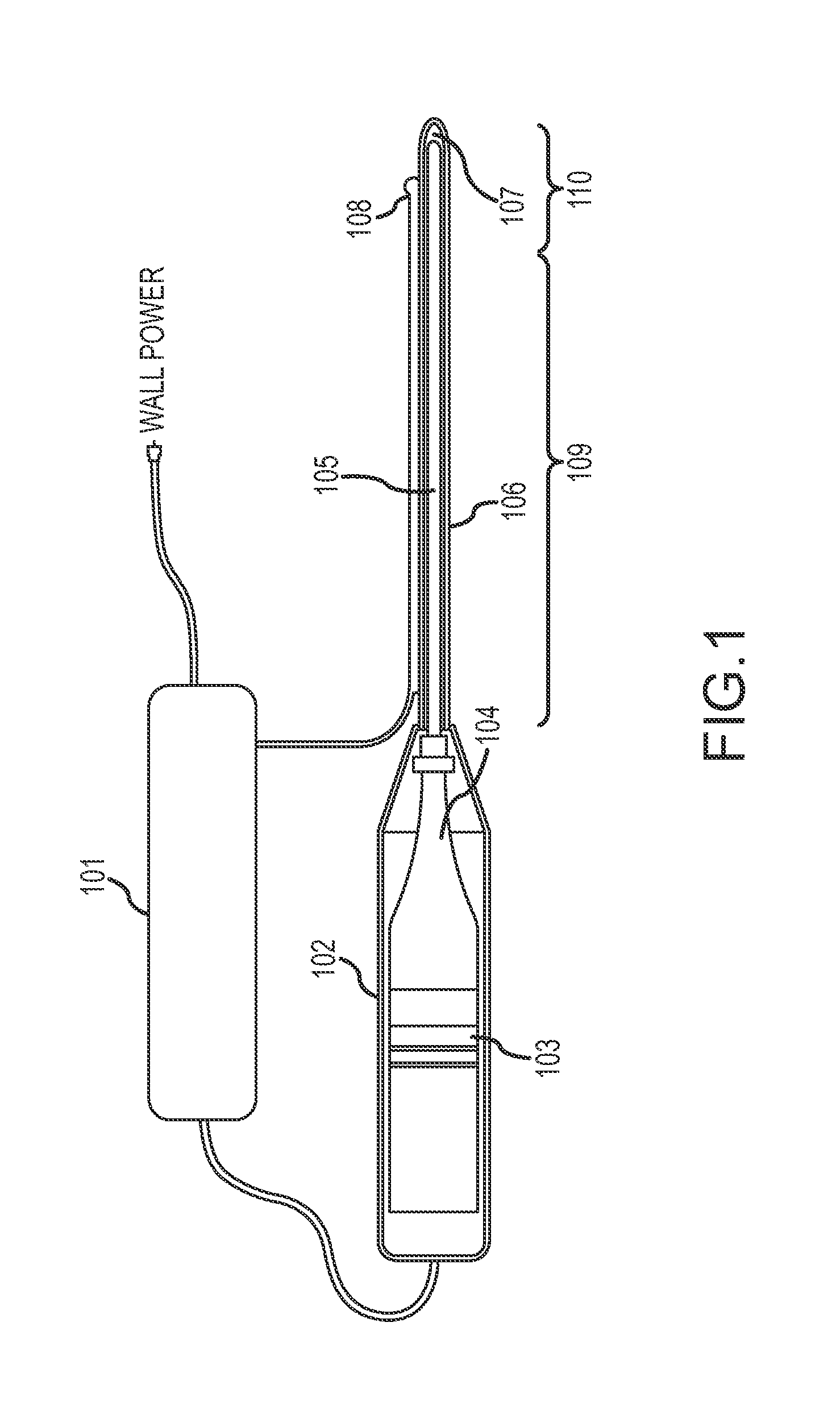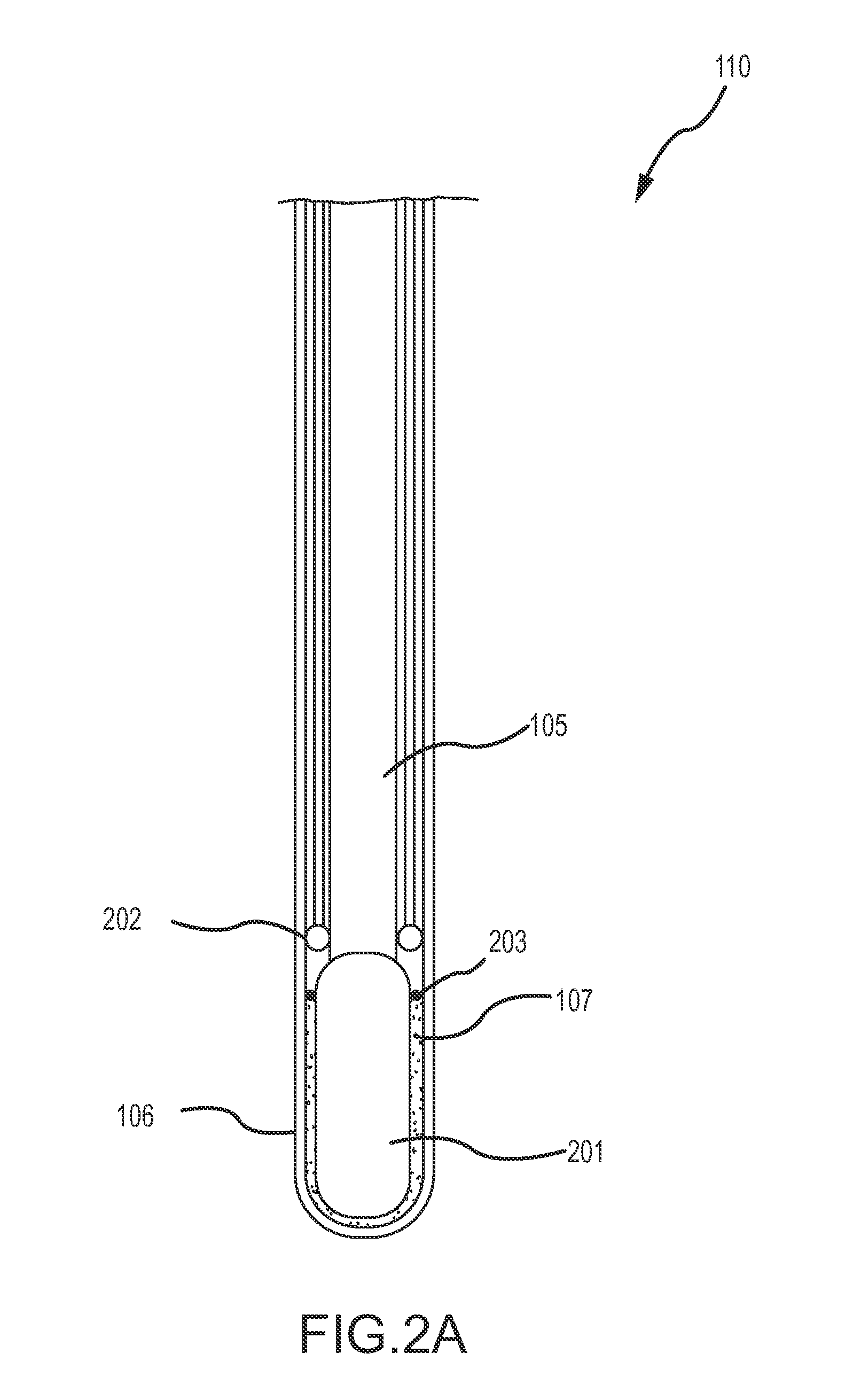Ultrasonically heated probe
a probe and ultrasonic technology, applied in the field of ultrasonic probes, can solve the problems of increased skin tissue, wrinkles and sagging skin, and not desirable aesthetic conditions
- Summary
- Abstract
- Description
- Claims
- Application Information
AI Technical Summary
Benefits of technology
Problems solved by technology
Method used
Image
Examples
Embodiment Construction
[0021]FIG. 1 is an overall diagram of a tissue heating apparatus, including a driver assembly comprising a generator 101 of high-energy electrical signals in the ultrasonic frequency range, a transducer 103 that creates ultrasonic vibrational energy in response to the electrical signals, and an ultrasonic horn (or transformer) 104 that boosts the vibrational amplitude of the transducer 103. The tissue heating apparatus further includes a housing 102 to enclose the transducer 103 and the ultrasonic horn 104, a probe 105 extending from the housing 102 and mechanically connected to the ultrasonic horn 104 to conduct the mechanical vibrational energy through a shaft region 109 to a tip region 110 of the probe 105. In embodiments, tip region 110 comprises a distal portion of the probe 105, including the probe tip and at least a distal portion of the probe shaft. The shaft region 109 comprises a proximal portion of probe 105, including a proximal portion of the probe shaft. The tissue hea...
PUM
 Login to View More
Login to View More Abstract
Description
Claims
Application Information
 Login to View More
Login to View More - R&D
- Intellectual Property
- Life Sciences
- Materials
- Tech Scout
- Unparalleled Data Quality
- Higher Quality Content
- 60% Fewer Hallucinations
Browse by: Latest US Patents, China's latest patents, Technical Efficacy Thesaurus, Application Domain, Technology Topic, Popular Technical Reports.
© 2025 PatSnap. All rights reserved.Legal|Privacy policy|Modern Slavery Act Transparency Statement|Sitemap|About US| Contact US: help@patsnap.com



